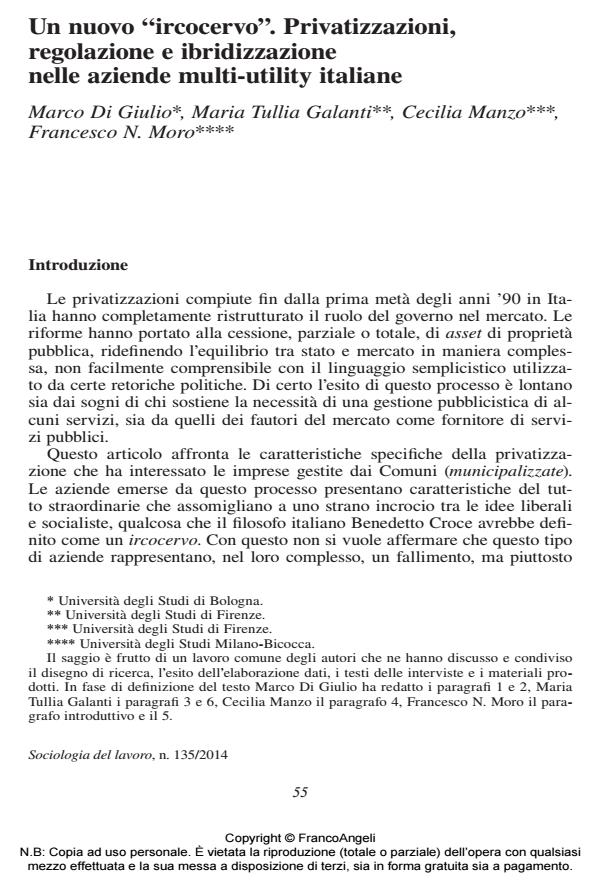A new "ircocervo". Privatization, regulation and hybridization in Italian multi-utility companies
Journal title SOCIOLOGIA DEL LAVORO
Author/s Marco Di Giulio, Maria Tullia Galanti, Cecilia Manzo, Francesco N. Moro
Publishing Year 2014 Issue 2014/135
Language Italian Pages 18 P. 55-72 File size 210 KB
DOI 10.3280/SL2014-135004
DOI is like a bar code for intellectual property: to have more infomation
click here
Below, you can see the article first page
If you want to buy this article in PDF format, you can do it, following the instructions to buy download credits

FrancoAngeli is member of Publishers International Linking Association, Inc (PILA), a not-for-profit association which run the CrossRef service enabling links to and from online scholarly content.
Privatization processes that involved municipal companies since the Nineties to the formation of multi-utility companies listed in the stock market, but with the majority of shares still in the hands of municipalities. Also, the "liberalized" markets were subject to uncertain regulation. In this new environment, companies faced mixed incentives that led to the adoption of very diverse, and sometimes inconsistent, patterns in governance and strategy.
Keywords: Governance failures, regulation, corporate governance, privatization, internationalization, Social Network Analysis
Marco Di Giulio, Maria Tullia Galanti, Cecilia Manzo, Francesco N. Moro, Un nuovo "ircocervo". Privatizzazioni, regolazione e ibridizzazione nelle aziende multi-utility italiane in "SOCIOLOGIA DEL LAVORO " 135/2014, pp 55-72, DOI: 10.3280/SL2014-135004